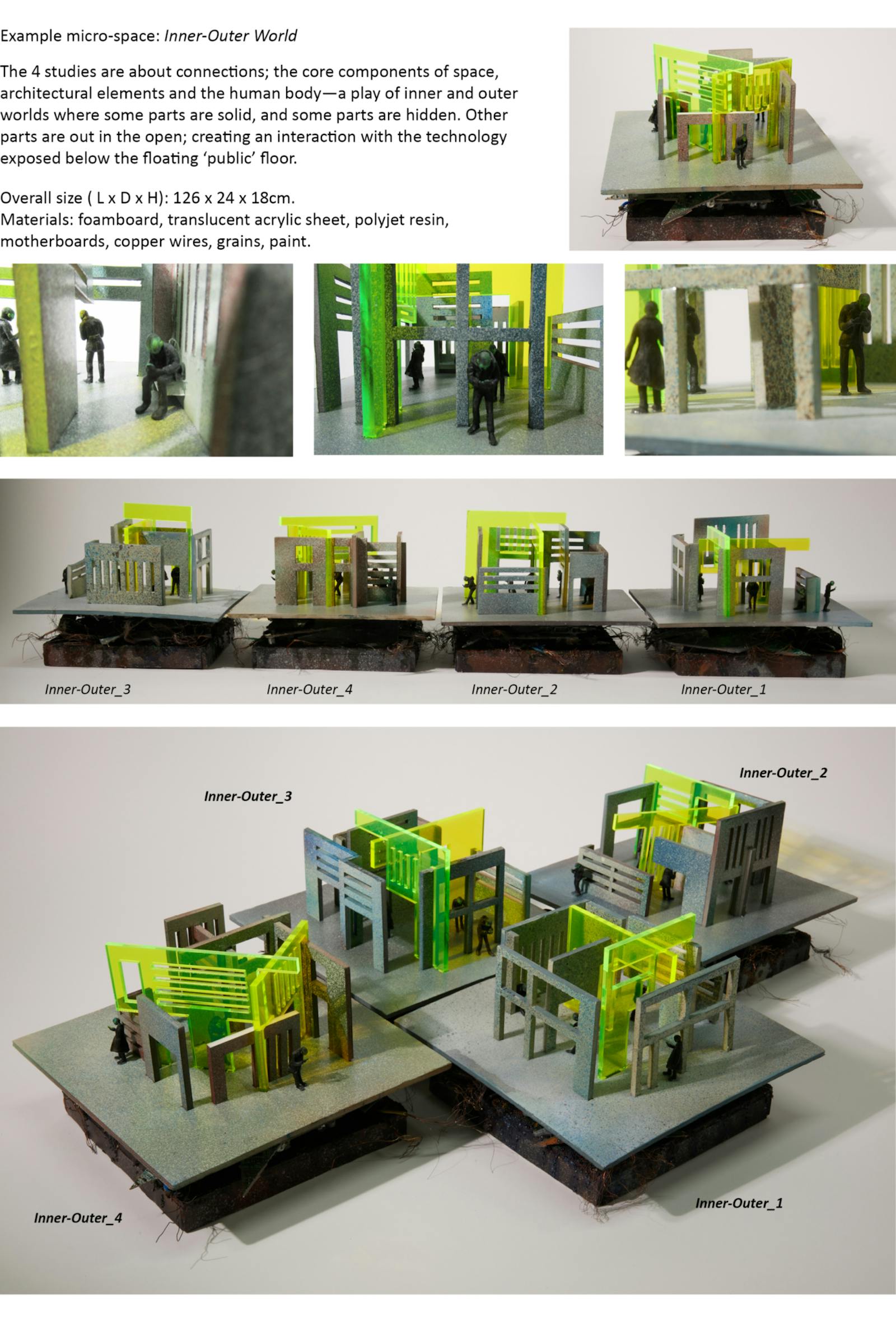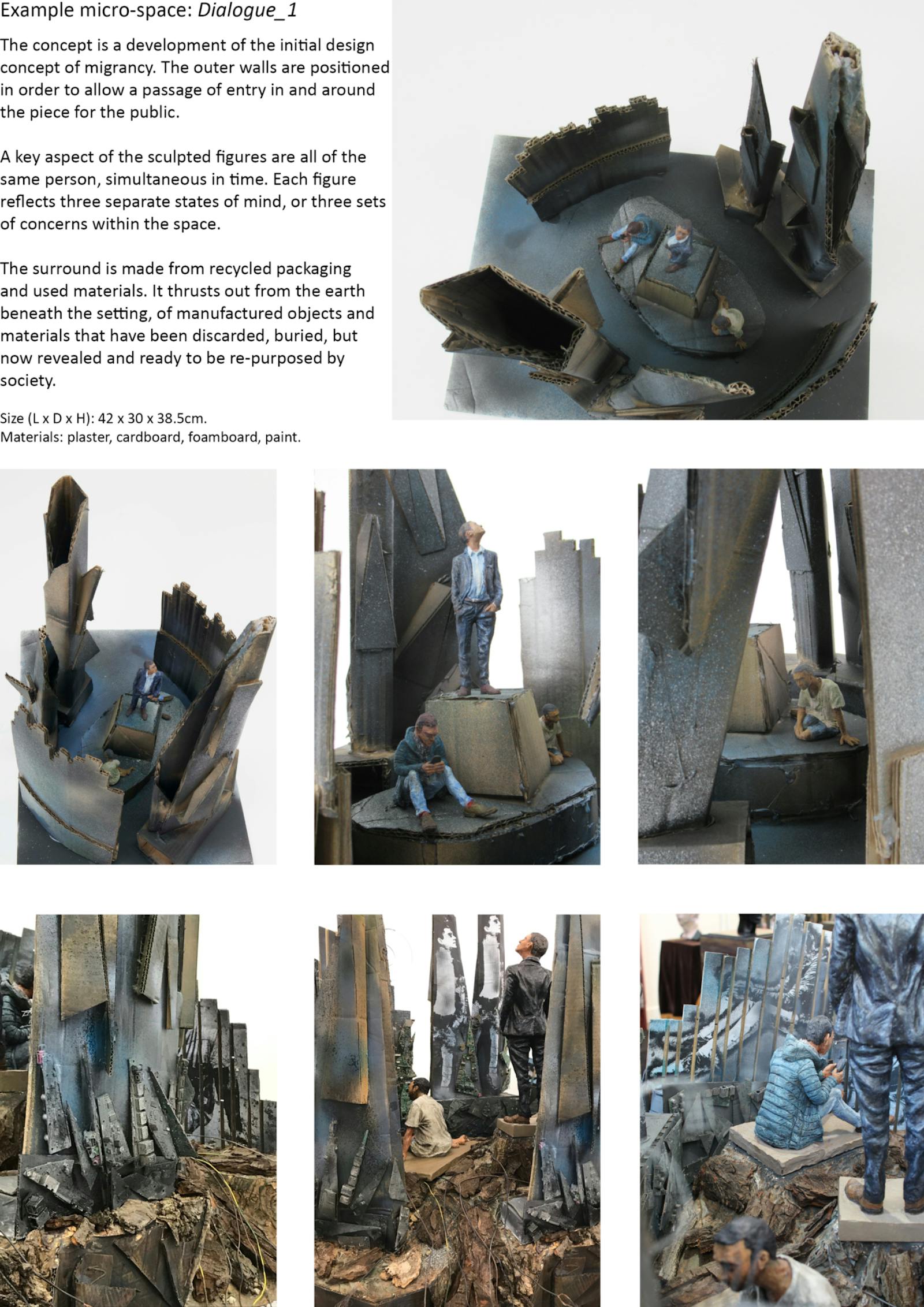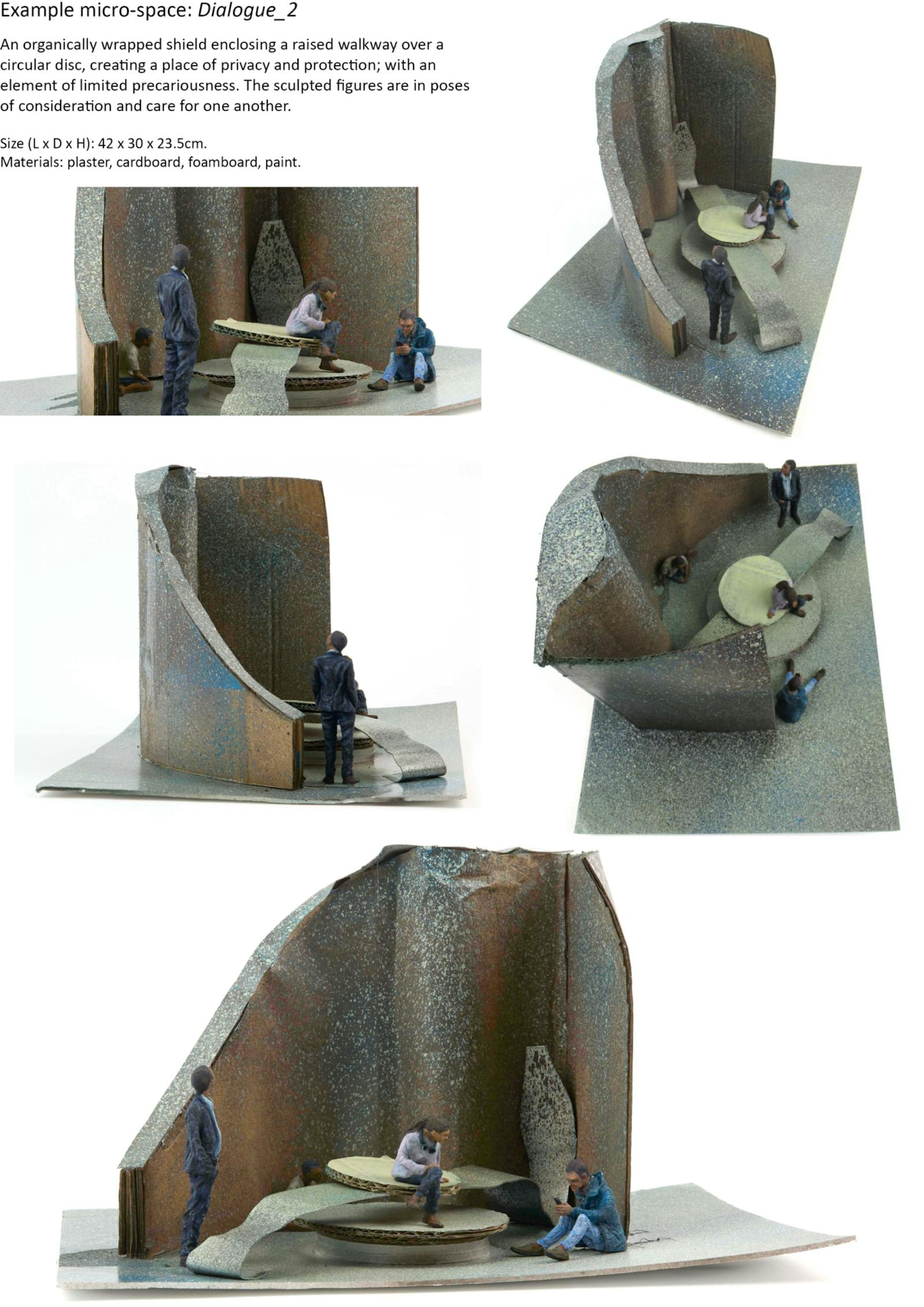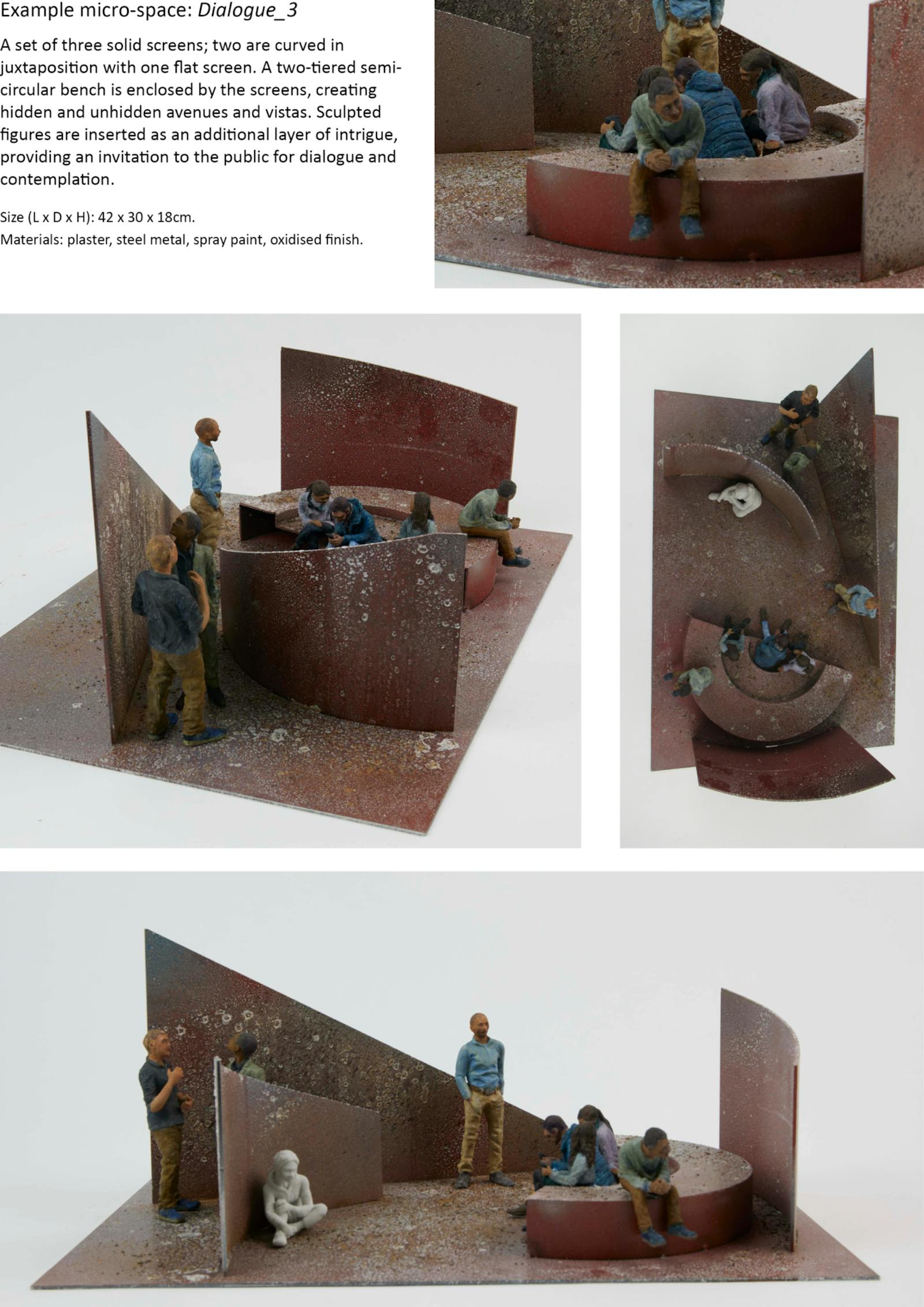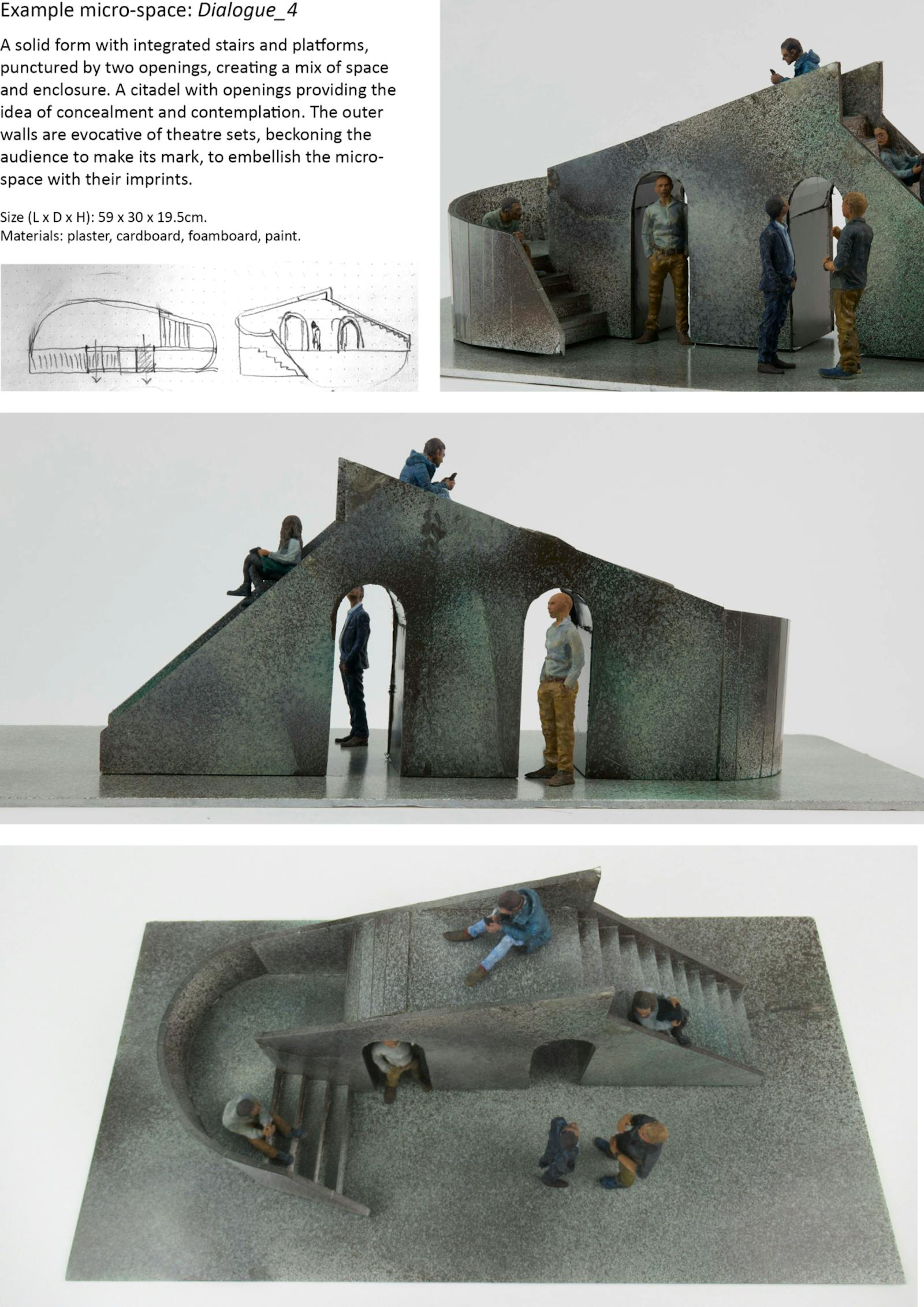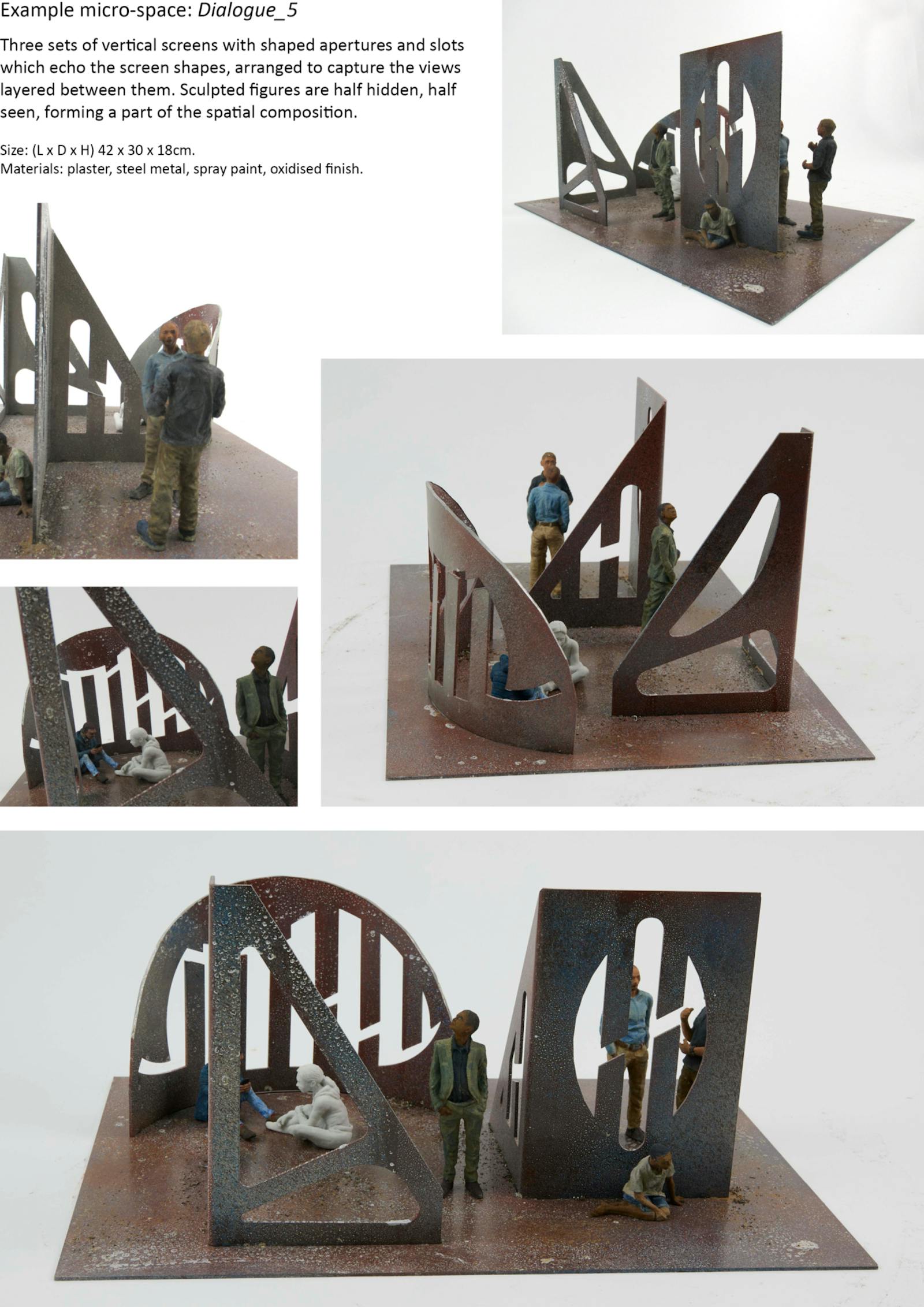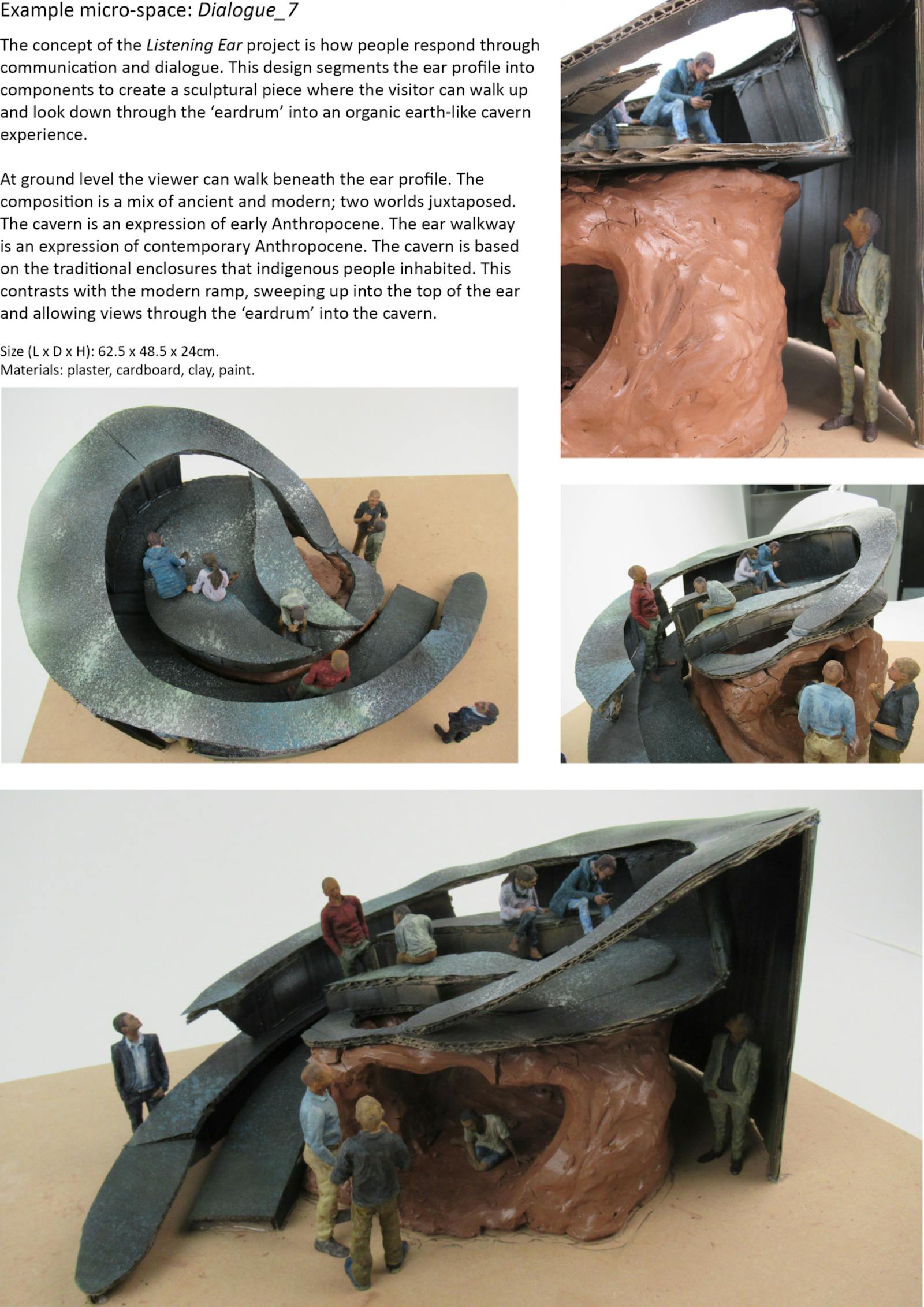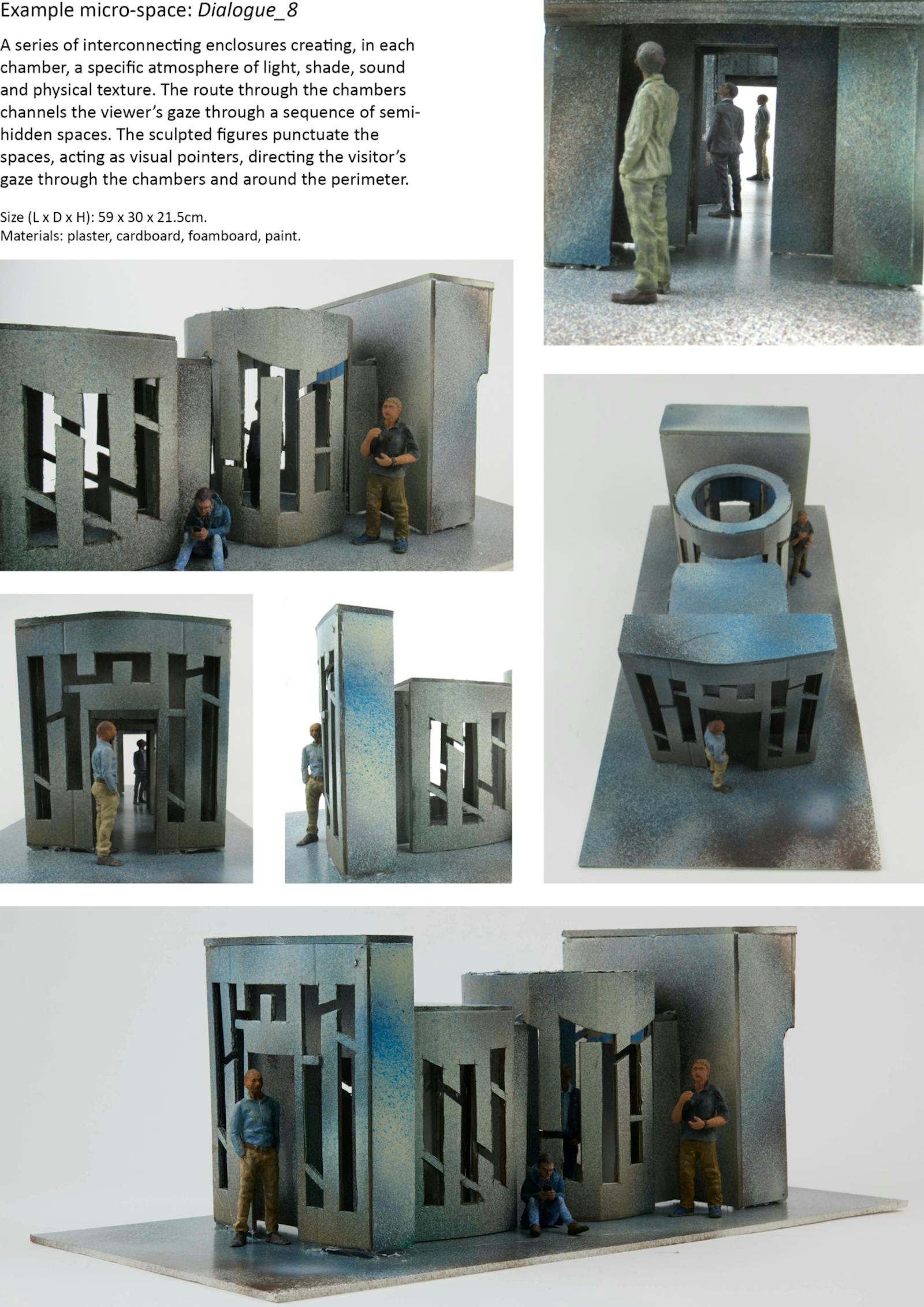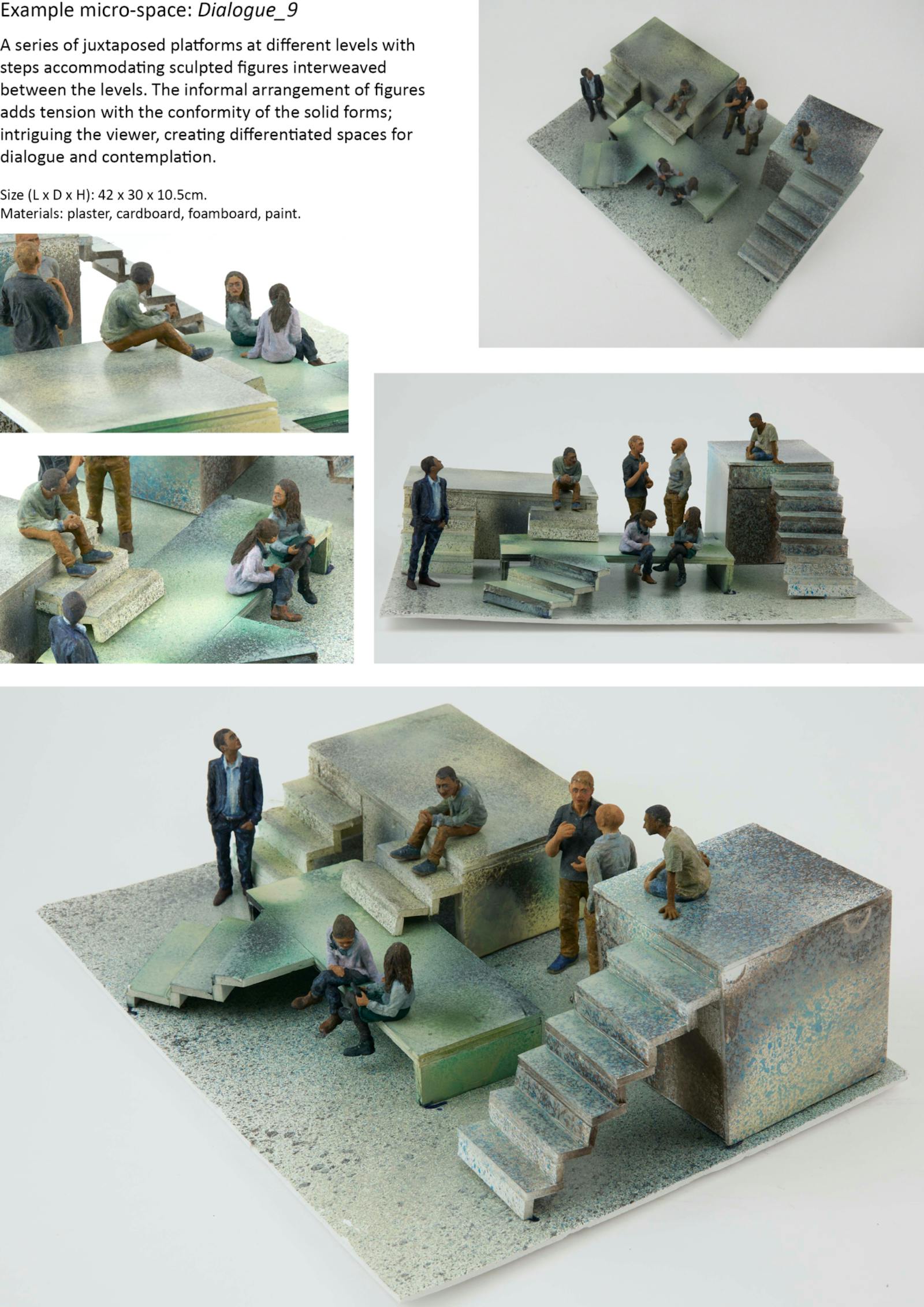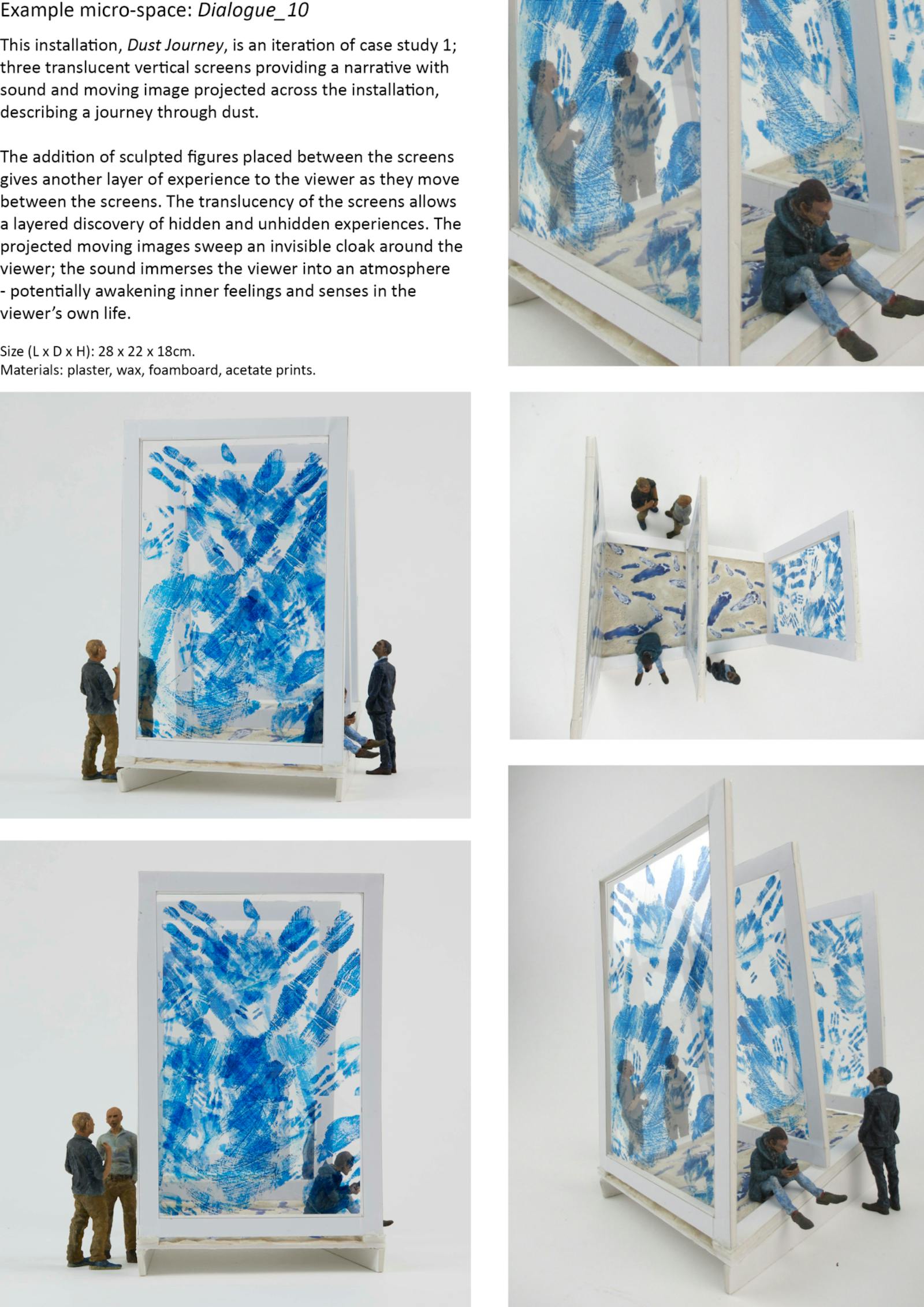Yasmin Watts
Public Sculpture, Community and Empowerment
Summary
British-Indian sculptor and architect Yasmin Watts addresses what we might learn about human interaction in the urban environment through the migrant’s experience. Utilising her architectural experience, Yasmin creates theatrical settings - ‘micro-spaces’, inspired by the forms and scales of the city to place her alienated sculpted human figures within. Playing with proportion and position, gesture and expression, Yasmin asks: what do humans, as a fundamentally social species, need in order to thrive? More specifically, what might a sculpture practice bring to understandings of what it means to live with one another, in diverse metropolitan communities, structured around principles of inclusivity and care?
Abstract
My practice-led research asks how public sculptures can communicate to individuals in constantly evolving multi-cultural societies on themes of their acculturation into heterogeneous urban communities, and of social discords within these environments.
The research investigates new ways of how the public can be drawn to artwork relating to present social concerns of acceptance and be part of the ethical discussion. How might public sculptures bring an embodied understanding to their audiences through shared expressions of the space?
I am approaching my research through the lens of my Zoroastrian heritage, uncovering the relationships and narratives between individuals and their surroundings, creating micro-spaces as sculptural dialogues, where sculpted human figures are arranged in an architectural urban setting of imagination. These sculptures address themes of cross-cultural narratives within modern cultures through a migrant’s experience; an experience of acculturation, acceptance and belonging. I invite the viewing audiences into these micro-spaces which I place in London, providing a place of reflection on past legacies and offering a place for healing.
Sculptural monuments in prime urban locations are places which draw the public to view and question, but not always gaining an understanding and realisation of the story the sculpture tells. The problems of past legacies and distorted histories are now being debated, and there is a growing consensus for a better representation of cross-cultures within our communities. My research aims to explore the relationships and narratives between these individuals, these communities, providing them with a place: a micro-space where these dialogues can happen.
Key words: figurative sculpture, public sculpture, ephemeral architecture, urban public space, acculturation.
Contextual and methodological components
Public sculpture can often be missed by the passing public. If public sculpture were to include non-traditional components, would the public view the space differently? Would that space become a daily stop in their local area? My research places sculpted figures within architectural settings as an invitation to draw a diverse community into the artworks. The public are invited into the spaces, to enter and interact with the elements, to feel empowered. This invitation to participate intends the viewing experience to expand on the idea of the human gaze, the concept of social attention being a fundamental part of human social behaviour.
The visitor’s experience is one of engagement with my artwork: my intention is that they are encountering an outer sensory reaction to the work, whilst also considering their inner feelings which are feeding off the visual response. This concept of inner and outer reactions is a continuous theme through my work.
The inner space and outer space work in parallel, not just in the mind of the individual but across the whole micro-space; viewers are absorbed in their ‘inner world’, interacting with those others in the ‘outer world’. This happening as a chance or serendipitous collaboration, perhaps not one that is entirely harmonious.
My research has been a journey of multiple experimentations, with the interweaving of contextual theories and practice-making, each side energising and correlating with the other. This cross-fertilisation has allowed me to create distinct and individual sculptures which embrace the essence, the inner workings of my research.
Creating ‘atmosphere’ is an integral part of my practice. Atmosphere is crafted to inform the creation of intimate spaces, my micro-spaces, with the viewer guided through the experience to discover an understanding of the sculpture within its social context. Atmosphere changes the human experience in terms of biological rhythms and cycles.
Light, shadow, echoes, aromas, air and sounds are considered from early concept stages. All are continuously and constantly changing; they are rhythms of nature. The integral effect is physical, emotional and spiritual. The effects create a dynamic connection with nature, but also a tension, increasing the human awareness of our connection with each other.
In my work, solid forms and surface textures create ‘sound’ which vibrates within the micro-spaces, providing the viewer with a palpable sense of spatial boundaries—an additional tool of awareness of scale and arrangement of space. If something looks interesting, a visitor’s curiosity is awakened; that sense of curiosity becomes a specific inquiry into the artwork. The inquiry leads to an exploration and an interaction with the sculpture. This approach is what my sculptures aim to achieve: a constant interaction with all the senses.
My methodology uses explorations of key themes in the making process—experiences of journey, figure-ground analysis, polyvocality and collaboration. The process relating to experiences of journey is one of creating ‘atmosphere’, the essence of the ‘why’ which leads the ‘how’. Figure-ground analysis informs the placing of the sculpted elements, both figures and settings. Polyvocality allows a method of expression which encircles and filters through the sculpted elements beyond to the viewing audience. Collaboration is the process of dialogue and communication required for the realisation of large-scale public sculpture.
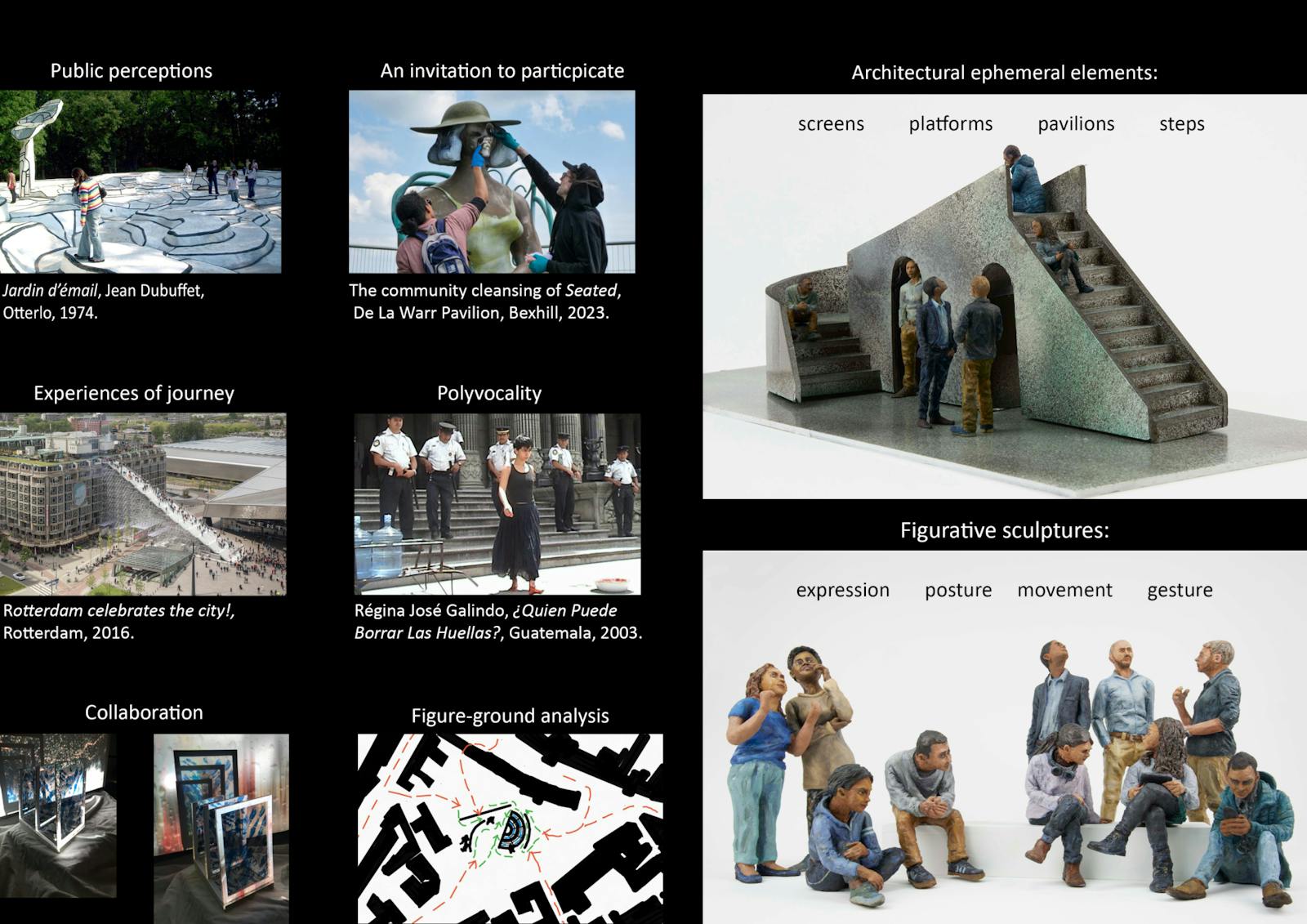
My making and sculpting process
The process of making embodies an exploratory journey by creating atmosphere, intrigue and mystery about each micro-space setting. This journey of exploration has been of developing ideas of how space evolves, of how to define that space, and whether it is empty, hidden or perforated space that provides views through three-dimensional forms.
My invitation is to bring the public into my micro-spaces using figurative forms set in architectural settings. My sculptures, in particular the figures, bring recognition to the viewer, the migrant, in terms of similar human expressions, clothing and posture. The figures are recognisable but also puzzling; they attract attention by their gestures, motion and life-like colours; providing an invitation to inquire.
Working with hand-crafting skills, I begin my creative process with physical sketches, concept paper and cardboard maquettes from recycled materials. These iterative small-scale maquettes act as testbeds for assessing the relationships of sculpted figures set in dialogue within the architectural setting. I upscale these further using my architectural knowledge and digital skills to create the final texturised pieces.
My figures evolve from hand sketches, sculpting in clay and wax and traditional casting methods. In sculpting the human form, I identify and express conditions, movements, features and details, capturing the individual of today. These figures express a contemporary characterisation through their stance, providing an interesting tension of scale with the settings.
They are painted in realistic colours, created at sizes larger and smaller, purposely different from human scale, which attract the passing public. When painted in a single colour at life-size, the figures provide a silhouette; the viewer encounters a profile of forms which are recognisable as figures, but which are integral in the space. These figures represent our urban public, they are familiar, but the way they are placed in the settings make the viewer question the figures’ ambiguity, their relationship to one another and within the context of each setting.
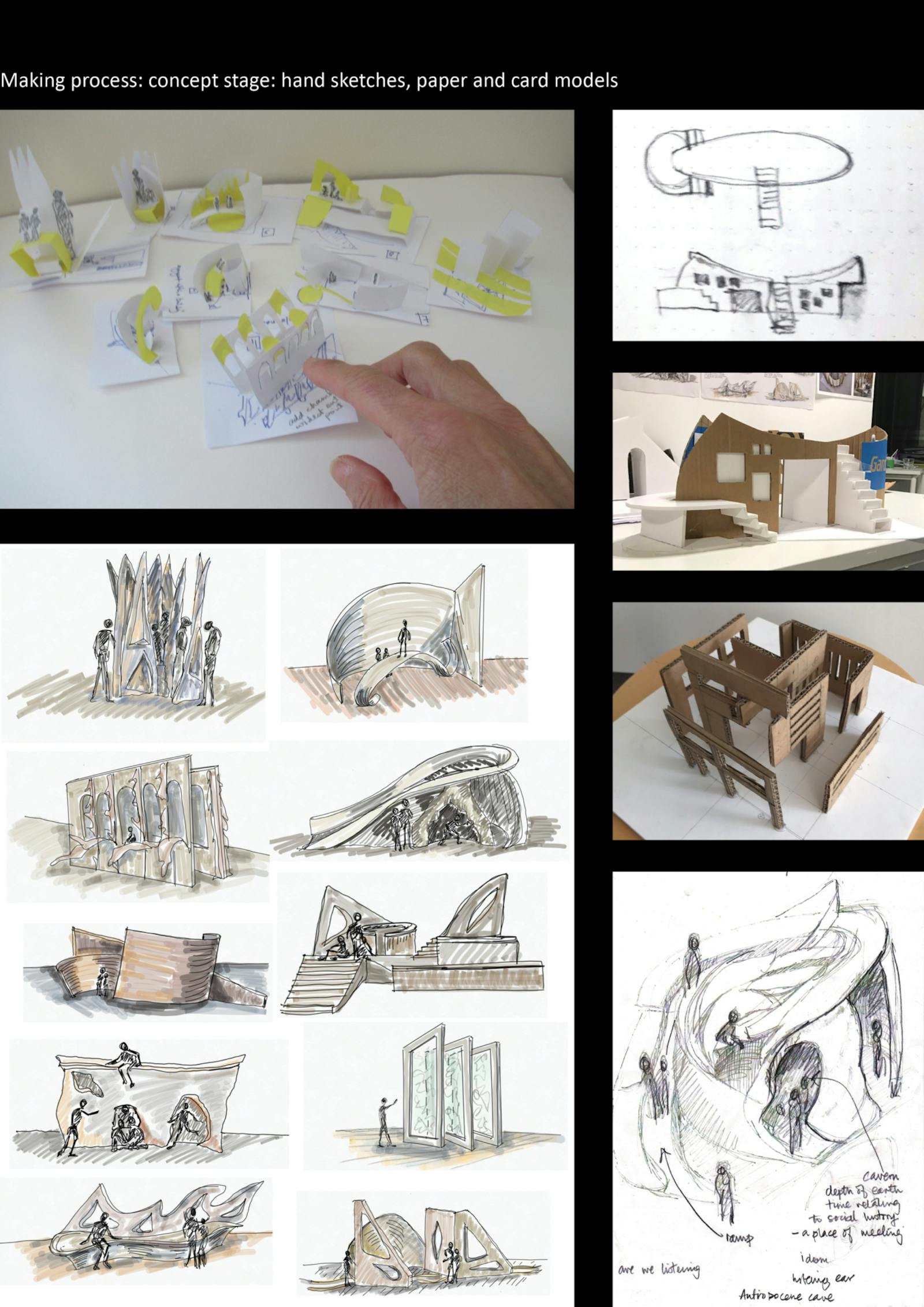
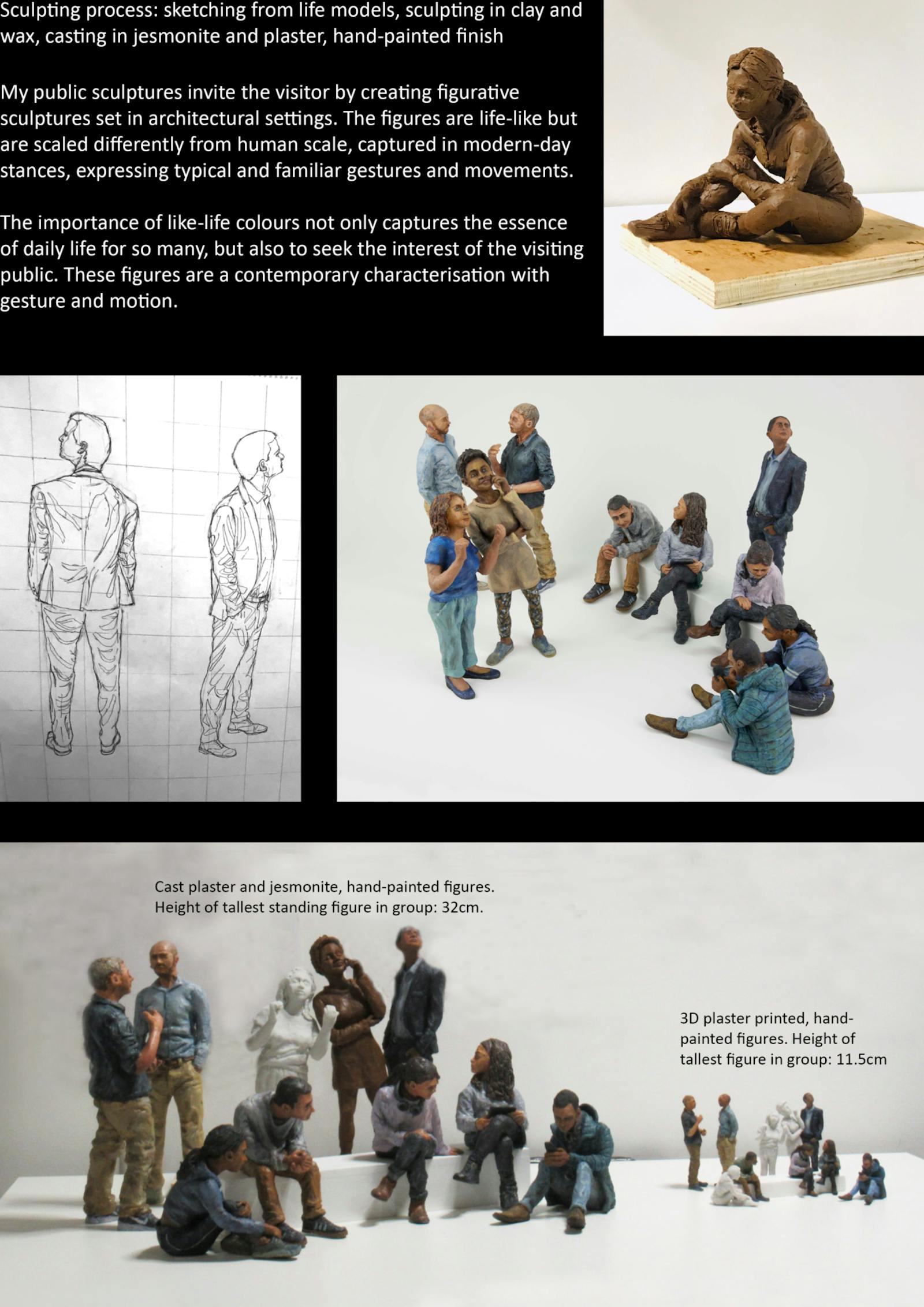
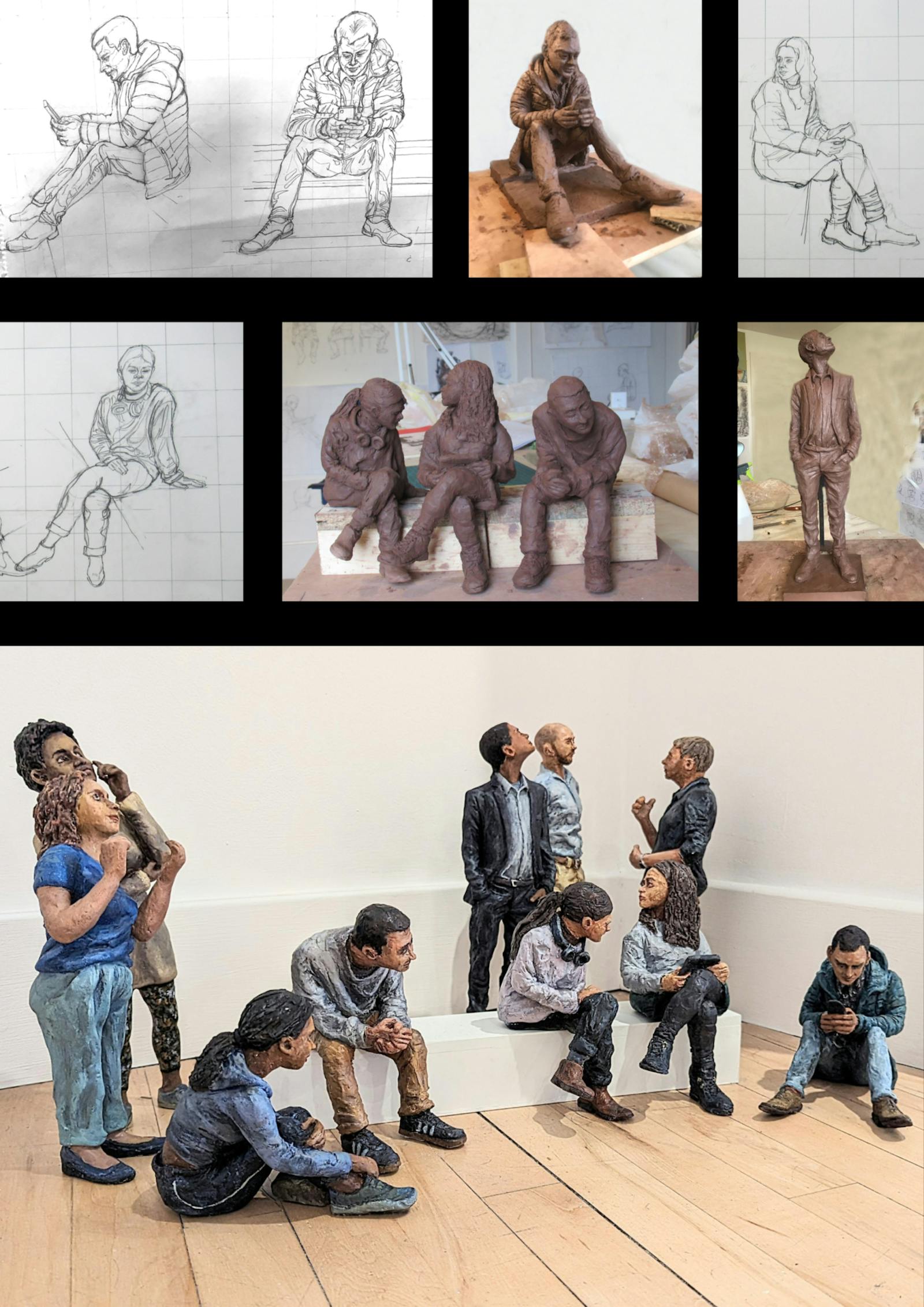
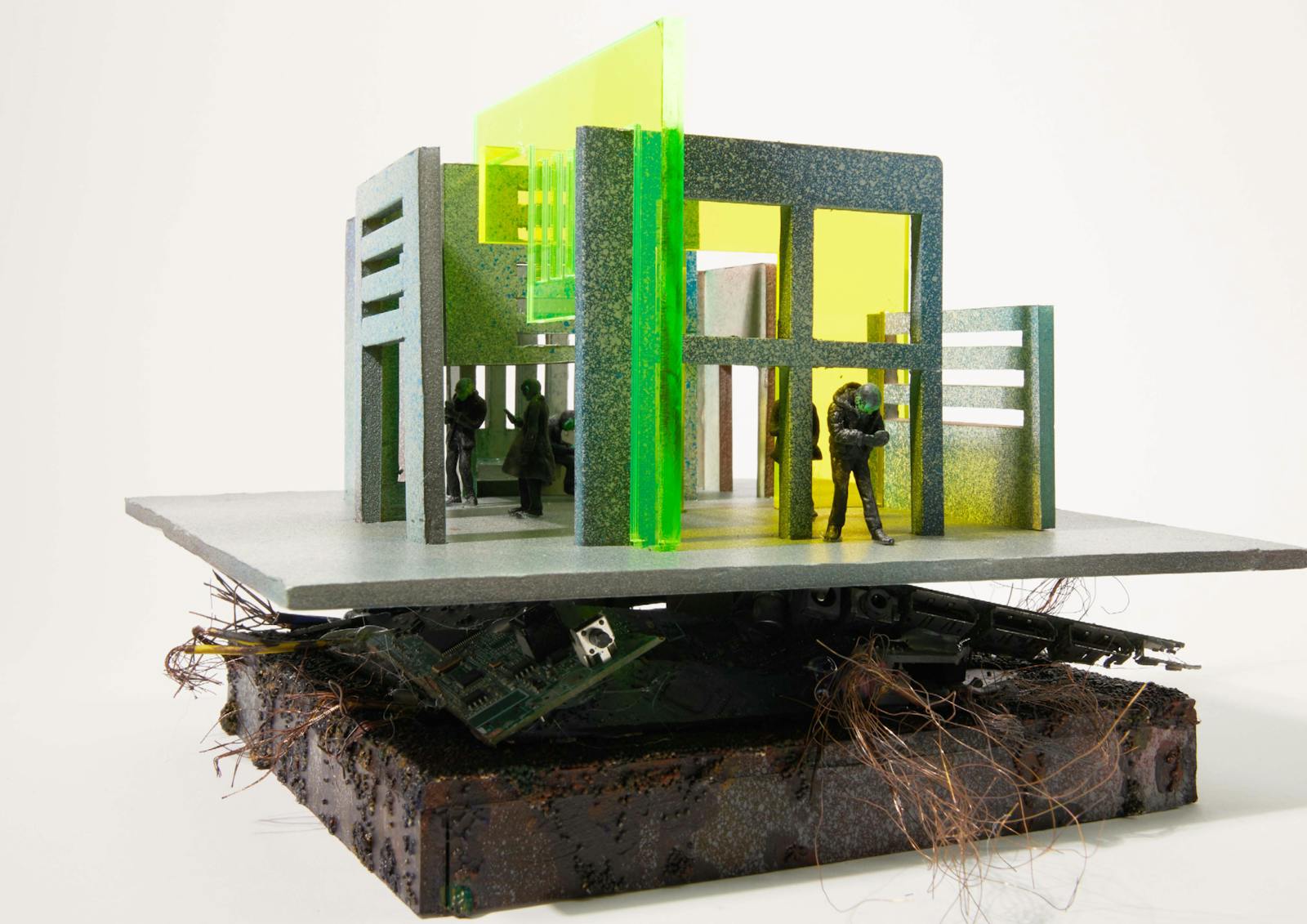
Micro-spaces
As a sculptor and architect, I work within the interdisciplinary fields of figurative sculpture, public sculpture, ephemeral architecture, sited in urban public spaces. My practice-led research integrates sculpture and architecture, creating a play of scale and form.
My novel approach to public sculpture is creating a ‘micro-space’, a uniquely contained space within the ‘wrapping’ of a larger public space; creating a dynamic atmosphere of mystery, intrigue and memory. The patterns of light and shade filtering through the views and vistas within the micro-spaces bring ‘experiences of journey’, enhanced by the ephemeral architectural elements which relate and evolve, responding to present-day circumstances and needs of our communities in our current times.
Arranging micro-spaces within larger spaces gives a variety of ways of being in those spaces. The architectural setting defines the micro-space, a perimeter into which the figures are placed. The micro-space is set within the public realm; a perimeter of buildings forming an edge to the open public space. The open space is residual which allows the micro-space within it to breathe. The figures create a sense of shared space, enabling another layer of experience. The figures set the character, the tone of the space, almost a behaviour of engagement in a way that viewers can interact whilst walking around. This creates a unique condition, halfway between a building and a stage set.
A chain of dialogues is started in each micro-space. The relationship of sculpted figures is set in dialogue with one another. This dialogue is continued and woven into relationships with the architectural elements. Experiences are created through a play of views of the figures, the shadows cast across the elements, the creation of passages of light and space, what is hidden and what is unhidden. The dialogues continue with the micro-space encouraging conversations with the viewing public who can interact within the curated spaces, eliciting group and individual reactions and reflections through discussion.
